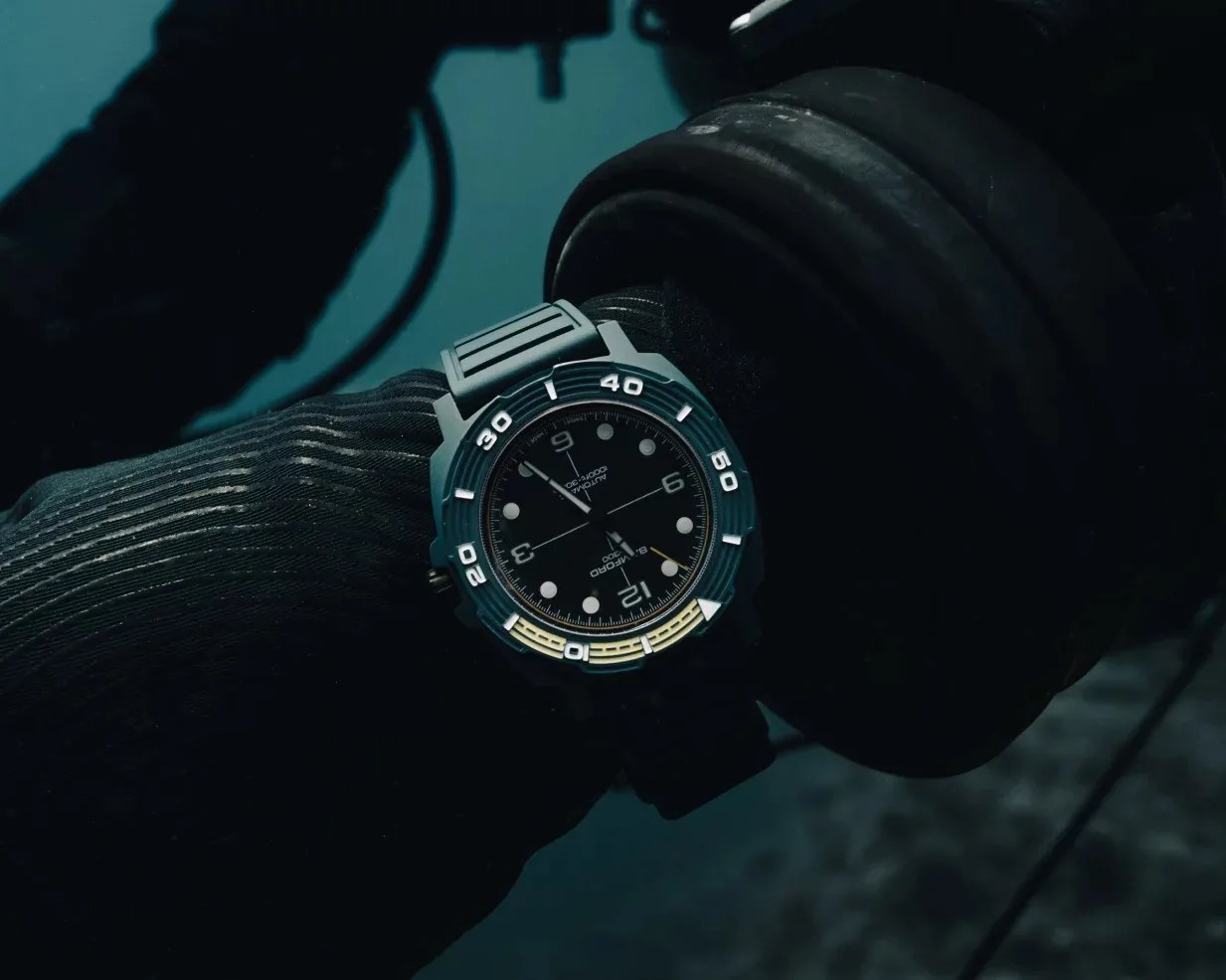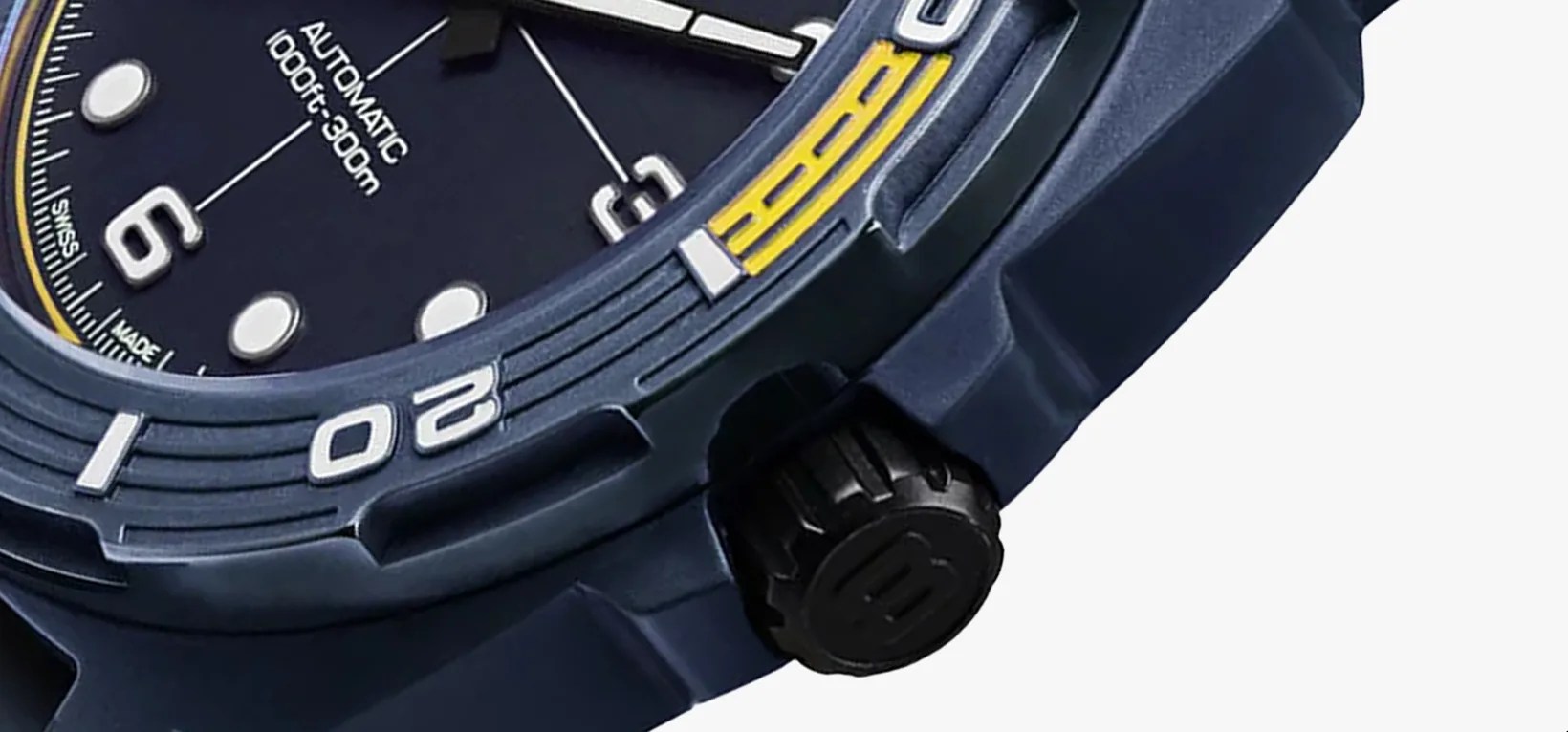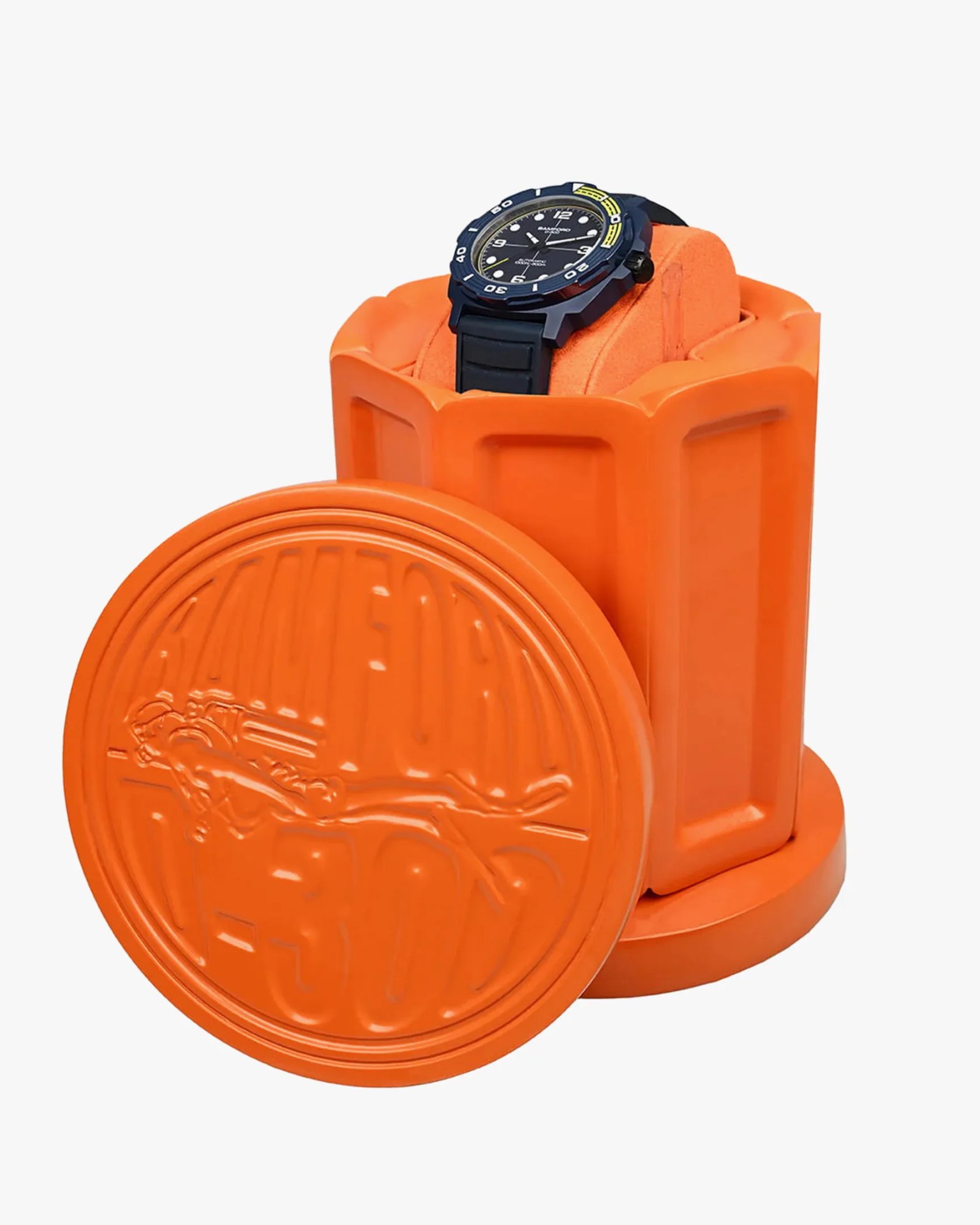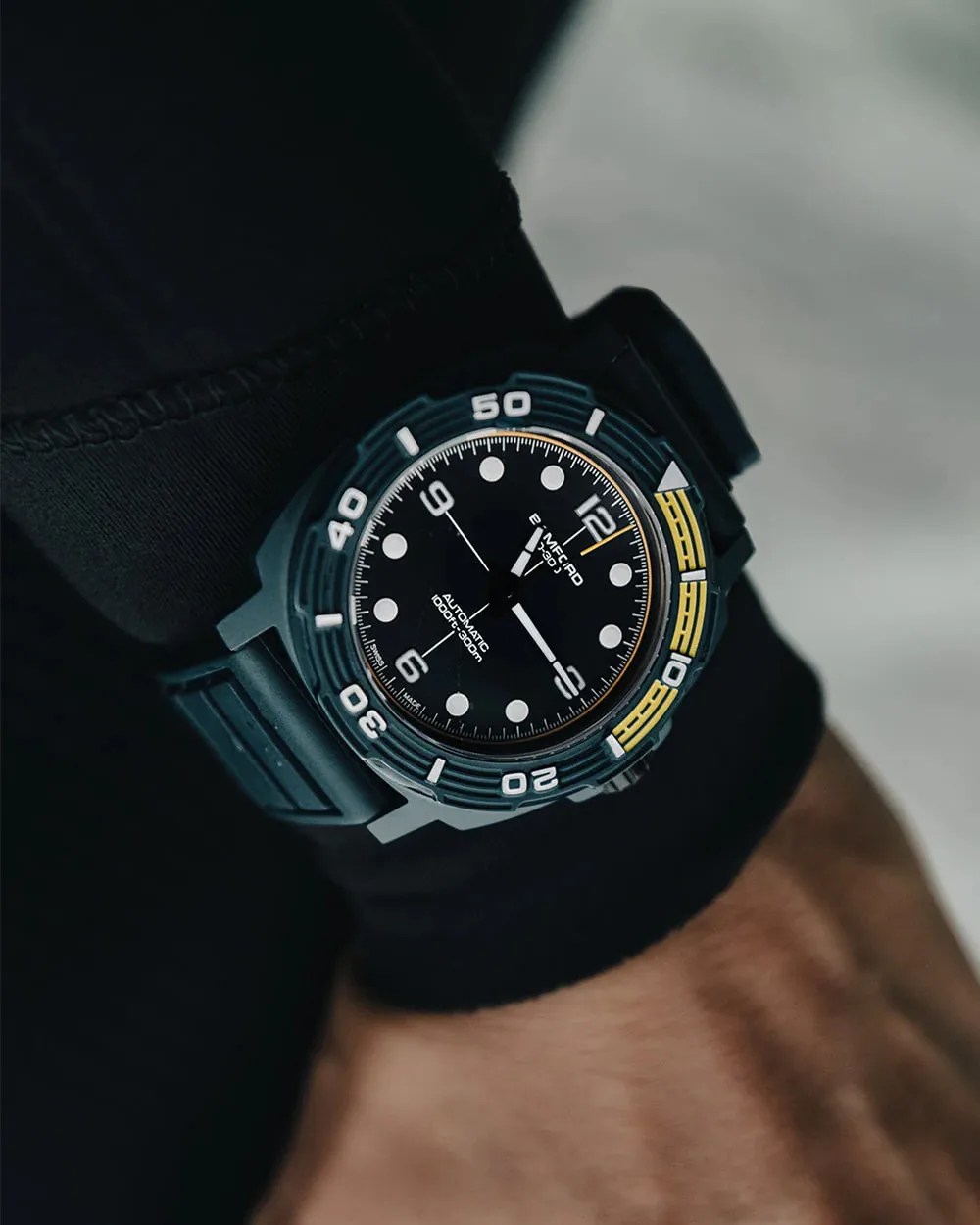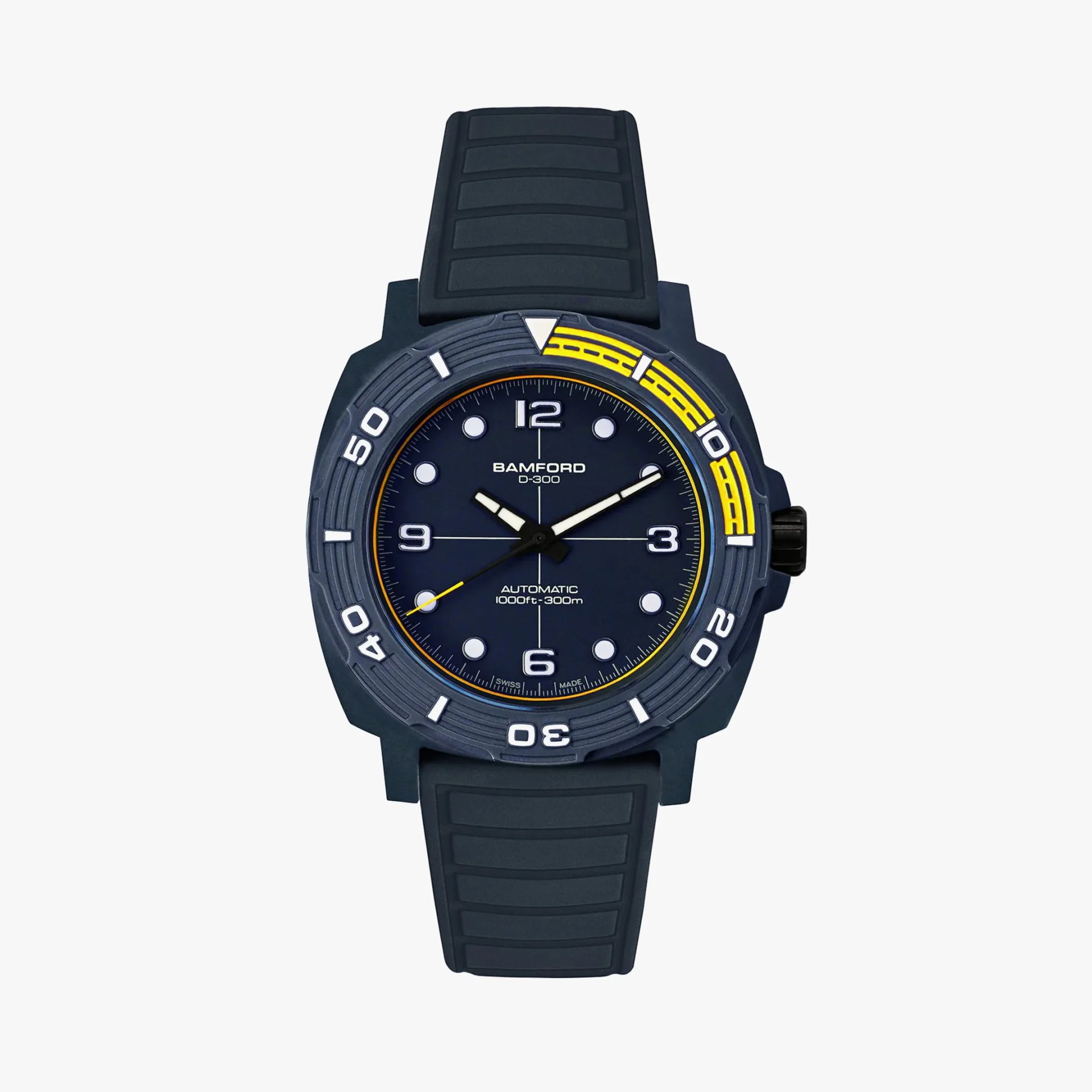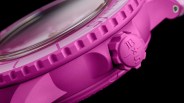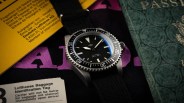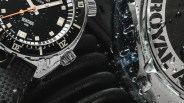Ceramic is the favorite new material in the world of dive watches, but it typically comes at a steep cost.
British microbrand Bamford has introduced a new dive watch line called the D-300. It boasts a fully ceramic case and bezel with a titanium core, case back and crown. While most watches that use those materials retail for $5,000 and up, this one dives well below that mark.
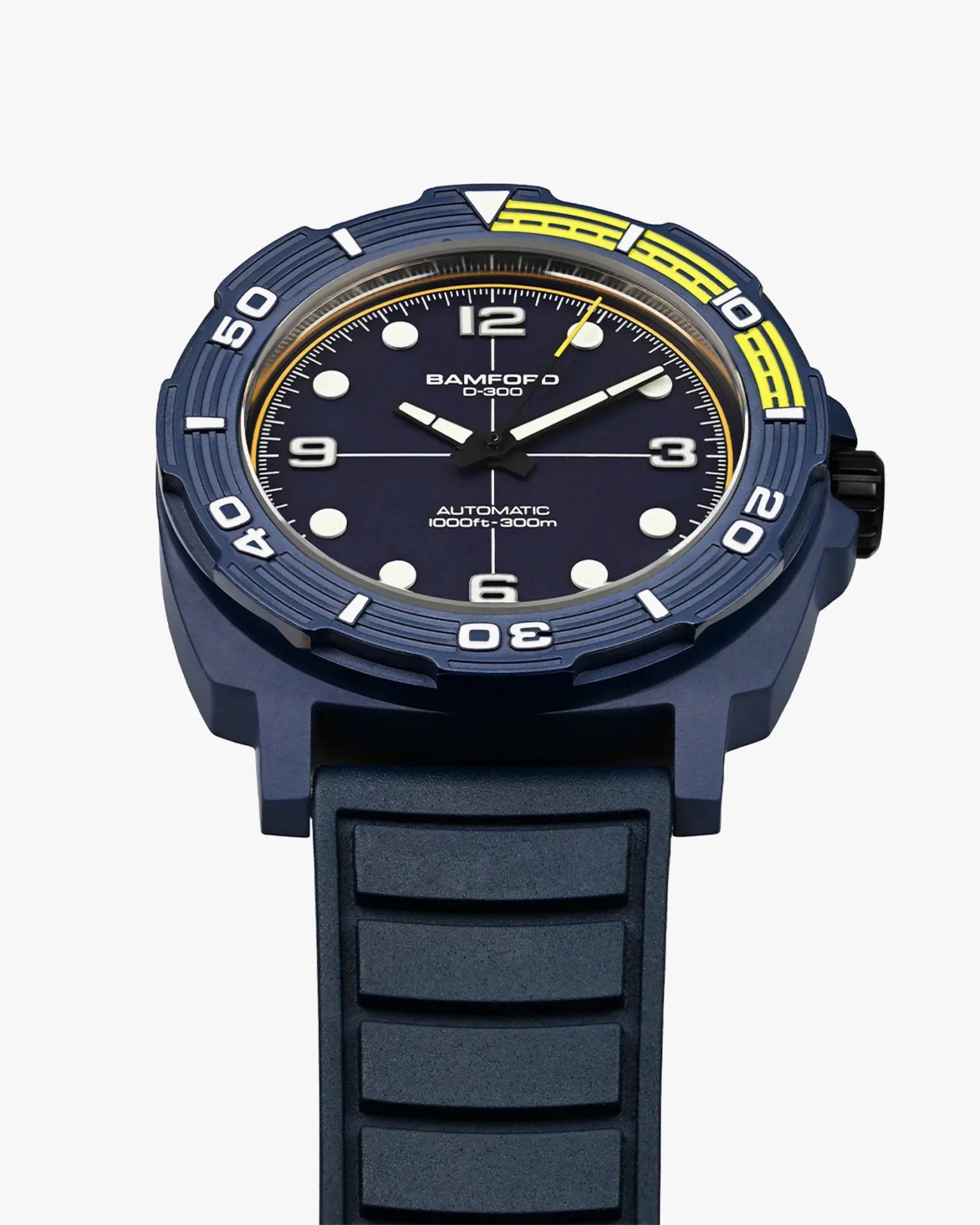
George Bamford, founder and head designer of his eponymous watch company, previously worked with forged carbon for the B347 chronograph.
With the D-300, however, he wanted to utilize the properties of ceramic to make a dive watch that looked, felt and functioned in a way that traditional materials didn’t allow.
Utilizing the material
Ceramic is a natural fit for dive watches because it is lighter and less reactive than steel but much more durable than plastic. It is a blend of the best properties of each material.
